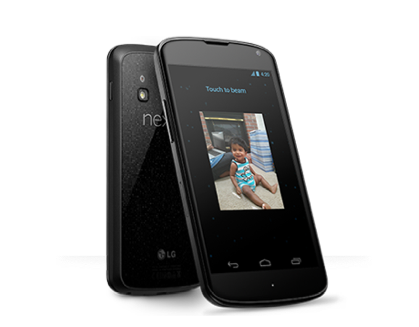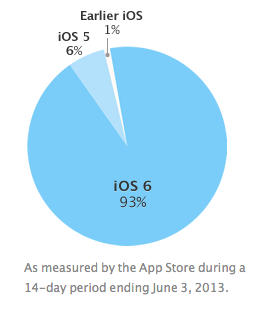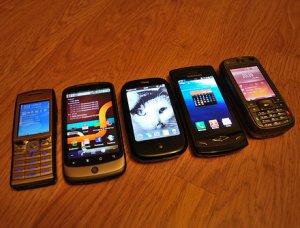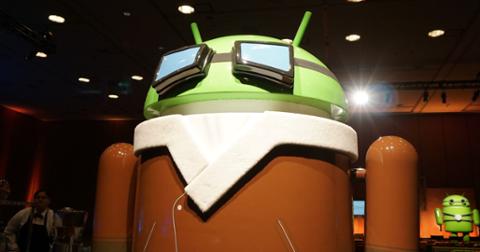[caption id="attachment_10560" align="aligncenter" width="419"]

Android's "Jelly Bean" build: a fragment of the ecosystem.[/caption]
Apple’s developer Website offers a new, handy graph of iOS fragmentation—which is to say, the mobile operating system isn’t fragmented much at all. A full 93 percent of iOS users are on iOS 6, the latest version; another 6 percent rely on iOS 5; and a mere 1 percent use an earlier iOS:

Compare that to Google Android, which really is fragmented: some 33 percent of Android devices run some variant (either 4.1.x or 4.2.x) of the “Jelly Bean” build, while 36.5 percent run a version of “Gingerbread,” which was first released in December 2010—ancient history, in mobile-software terms. Other versions take up varying slices of the Android pie:

Apple-centric blogs are leaping on the two companies’ fragmentation data, suggesting that too many software versions running on too many devices is ultimately hurting the ecosystem, especially when newer software is incompatible with older OS versions. “Android's advocates have long claimed that fragmentation isn't really a problem, while also trying to claim that Android's large global shipments position it as a larger platform for developers than Apple's iOS,”
Apple Insider wrote in a June 20 posting. “But even Google has been unable to roll out its apps and services across a significant number of Android users.” For years, Google’s rivals have used the “Android is fragmented” argument to hype their own platforms. Microsoft executives, for example, have long suggested that one of their key goals with Windows Phone is to prevent it from splintering into multiple versions on multiple devices, ensuring a common experience for all users of the platform. But is Android’s fragmentation really hurting the platform? Not as far as global shipments are concerned.
According to recent data from research firm IDC, Android’s market-share stood at 75 percent in the first quarter of 2013—up from 59.1 percent in the same quarter a year ago. Meanwhile, iOS owned 17.3 percent of the market—compared to 23.1 percent in the year-ago quarter. That’s not to say that the mobile-device market is a total duopoly, despite Android and iOS owning 92.3 percent of it. “Underpinning the worldwide smartphone market is the constantly shifting operating system landscape,” Ramon Llamas, research manager with IDC’s Mobile Phone team, wrote in a May 16 research note. “Android and iOS accounted for more than the lion’s share of smartphones in the first quarter, but a closer examination of the other platforms reveals turnaround and demand for alternatives.” Those alternatives include Windows Phone and BlackBerry 10, which are fighting hard for third place. But they have quite a distance to go before they can begin to challenge iOS, much less Android.
Images: Google, Apple, Google  Android's "Jelly Bean" build: a fragment of the ecosystem.[/caption] Apple’s developer Website offers a new, handy graph of iOS fragmentation—which is to say, the mobile operating system isn’t fragmented much at all. A full 93 percent of iOS users are on iOS 6, the latest version; another 6 percent rely on iOS 5; and a mere 1 percent use an earlier iOS:
Android's "Jelly Bean" build: a fragment of the ecosystem.[/caption] Apple’s developer Website offers a new, handy graph of iOS fragmentation—which is to say, the mobile operating system isn’t fragmented much at all. A full 93 percent of iOS users are on iOS 6, the latest version; another 6 percent rely on iOS 5; and a mere 1 percent use an earlier iOS:  Compare that to Google Android, which really is fragmented: some 33 percent of Android devices run some variant (either 4.1.x or 4.2.x) of the “Jelly Bean” build, while 36.5 percent run a version of “Gingerbread,” which was first released in December 2010—ancient history, in mobile-software terms. Other versions take up varying slices of the Android pie:
Compare that to Google Android, which really is fragmented: some 33 percent of Android devices run some variant (either 4.1.x or 4.2.x) of the “Jelly Bean” build, while 36.5 percent run a version of “Gingerbread,” which was first released in December 2010—ancient history, in mobile-software terms. Other versions take up varying slices of the Android pie:  Apple-centric blogs are leaping on the two companies’ fragmentation data, suggesting that too many software versions running on too many devices is ultimately hurting the ecosystem, especially when newer software is incompatible with older OS versions. “Android's advocates have long claimed that fragmentation isn't really a problem, while also trying to claim that Android's large global shipments position it as a larger platform for developers than Apple's iOS,” Apple Insider wrote in a June 20 posting. “But even Google has been unable to roll out its apps and services across a significant number of Android users.” For years, Google’s rivals have used the “Android is fragmented” argument to hype their own platforms. Microsoft executives, for example, have long suggested that one of their key goals with Windows Phone is to prevent it from splintering into multiple versions on multiple devices, ensuring a common experience for all users of the platform. But is Android’s fragmentation really hurting the platform? Not as far as global shipments are concerned. According to recent data from research firm IDC, Android’s market-share stood at 75 percent in the first quarter of 2013—up from 59.1 percent in the same quarter a year ago. Meanwhile, iOS owned 17.3 percent of the market—compared to 23.1 percent in the year-ago quarter. That’s not to say that the mobile-device market is a total duopoly, despite Android and iOS owning 92.3 percent of it. “Underpinning the worldwide smartphone market is the constantly shifting operating system landscape,” Ramon Llamas, research manager with IDC’s Mobile Phone team, wrote in a May 16 research note. “Android and iOS accounted for more than the lion’s share of smartphones in the first quarter, but a closer examination of the other platforms reveals turnaround and demand for alternatives.” Those alternatives include Windows Phone and BlackBerry 10, which are fighting hard for third place. But they have quite a distance to go before they can begin to challenge iOS, much less Android. Images: Google, Apple, Google
Apple-centric blogs are leaping on the two companies’ fragmentation data, suggesting that too many software versions running on too many devices is ultimately hurting the ecosystem, especially when newer software is incompatible with older OS versions. “Android's advocates have long claimed that fragmentation isn't really a problem, while also trying to claim that Android's large global shipments position it as a larger platform for developers than Apple's iOS,” Apple Insider wrote in a June 20 posting. “But even Google has been unable to roll out its apps and services across a significant number of Android users.” For years, Google’s rivals have used the “Android is fragmented” argument to hype their own platforms. Microsoft executives, for example, have long suggested that one of their key goals with Windows Phone is to prevent it from splintering into multiple versions on multiple devices, ensuring a common experience for all users of the platform. But is Android’s fragmentation really hurting the platform? Not as far as global shipments are concerned. According to recent data from research firm IDC, Android’s market-share stood at 75 percent in the first quarter of 2013—up from 59.1 percent in the same quarter a year ago. Meanwhile, iOS owned 17.3 percent of the market—compared to 23.1 percent in the year-ago quarter. That’s not to say that the mobile-device market is a total duopoly, despite Android and iOS owning 92.3 percent of it. “Underpinning the worldwide smartphone market is the constantly shifting operating system landscape,” Ramon Llamas, research manager with IDC’s Mobile Phone team, wrote in a May 16 research note. “Android and iOS accounted for more than the lion’s share of smartphones in the first quarter, but a closer examination of the other platforms reveals turnaround and demand for alternatives.” Those alternatives include Windows Phone and BlackBerry 10, which are fighting hard for third place. But they have quite a distance to go before they can begin to challenge iOS, much less Android. Images: Google, Apple, Google 

